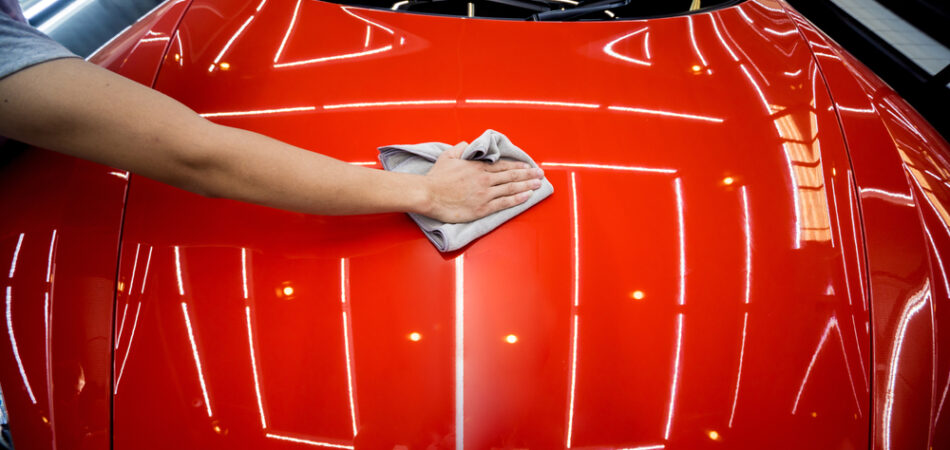Ceramic Coatings San Jose: Enhance and Secure Your Lorry's Finish
Ceramic Coatings San Jose: Enhance and Secure Your Lorry's Finish
Blog Article
Introducing the Scientific Research Behind Ceramic Coatings: How Does It Work and Why Is It Superior to Typical Options?
Ceramic coatings have been gaining appeal in different markets for their outstanding performance and resilience. Understanding just how ceramic finishes work and why they outperform standard options is important for those seeking to boost the durability and resilience of their products.
The Chemistry of Ceramic Coatings
In understanding ceramic coatings, diving into the detailed chemistry behind their structure is essential for realizing their performance and resilience. Ceramic layers are mostly composed of silicon dioxide (SiO2), which creates a protective and solid layer when put on various surface areas. This chemical structure gives outstanding resistance to heat, chemicals, and rust, making ceramic coverings very demanded for a large range of applications.
The chemistry behind ceramic layers includes the development of covalent bonds between silicon and oxygen atoms, creating a stiff network that improves the finishing's strength and sturdiness. Additionally, the visibility of various other elements such as light weight aluminum, titanium, and zirconium additional enhances the finishing's buildings, offering boosted solidity and adhesion to surfaces.
Comprehending the chemical structure of ceramic coatings enables the personalization of solutions to match specific needs, whether it be for automobile, commercial, or household purposes. By taking advantage of the power of chemistry, ceramic coatings continue to pave the means for premium protection and performance in different markets.
Benefits of Ceramic Coatings

As an outcome, ceramic layers make cleaning and keeping surface areas much easier and much less time-consuming. Generally, the wide range of advantages supplied by ceramic coatings make them a premium choice contrasted to traditional covering techniques.
Exactly How Ceramic Coatings Bond
Ceramic finishings bond to surfaces through a procedure that entails molecular attachment and chemical interactions. When a ceramic finishing is used to a surface area, it forms a strong bond by chemically adhering to the surface area at a molecular level.
In addition, the chemical interactions between the ceramic finish and the surface area better enhance the bond. ceramic coatings san jose. These interactions allow the ceramic covering to create a continuous and smooth layer on the surface area, supplying outstanding defense and durability. Unlike typical layers that might rest on the surface without completely bonding, ceramic finishings produce a long-term bond that is resistant to chemicals, UV rays, and harsh ecological conditions

Essentially, the bonding system of ceramic coatings makes certain a reliable and resilient protective layer that exceeds typical coating options. This weblink remarkable bond adds to the durability, scratch resistance, and longevity of ceramic coatings, making them a favored selection for numerous applications.
Longevity of Ceramic Coatings
The remarkable long life of ceramic coverings originates from their durable molecular attachment and chemical interactions with surface areas, ensuring a sturdy safety layer that surpasses traditional covering options. Once used, ceramic coverings form a strong bond with the substratum, creating a durable obstacle versus various ecological stress factors such as UV radiation, chemicals, and abrasions. This bond is so secure that it can stand up to the roughness of daily use without wearing away or degrading rapidly.
Unlike conventional coverings that may degrade over time, ceramic coatings keep their honesty for an extensive period, offering long-lasting protection for the underlying surface area. On the whole, the phenomenal longevity of ceramic layers makes them a superior selection for securing a broad range of surface areas in different applications.
Ceramic Coatings Vs. Conventional Alternatives
In comparison to traditional layer methods, ceramic finishes supply a distinct blend of toughness and safety capacities that set them apart in various surface security applications. Standard alternatives such as wax or sealants supply a discover this short-lived layer of defense that can diminish quickly, calling for constant reapplication. On the various other hand, ceramic layers create a solid bond with the surface area, developing a semi-permanent or irreversible obstacle that is extremely resistant to abrasion, chemicals, UV rays, and extreme temperatures.
Furthermore, ceramic finishings provide exceptional hydrophobic properties contrasted to standard finishes. The hydrophobic nature of ceramic finishes creates water to bead up and roll off the surface, carrying dust and impurities with it. This self-cleaning effect aids to preserve the surface area's cleanliness and gloss for extensive durations, reducing the demand for constant maintenance.
Additionally, ceramic coverings have a thicker layer contrasted to standard choices, providing boosted scratch resistance and defense versus minor influences. This toughness guarantees long-lasting efficiency and helps maintain the aesthetic allure of the treated surface area for a prolonged period.
Verdict
To conclude, the science behind ceramic coverings depends on their chemical composition and bonding residential or commercial properties, making them above standard options. The benefits of ceramic layers consist of raised sturdiness and protection for surface areas. By comprehending pop over to this site how ceramic finishes work and their advantages over typical choices, one can make enlightened decisions when thinking about layer choices for numerous applications.
Unlike conventional coatings that may rest on the surface area without fully bonding, ceramic layers produce an irreversible bond that is resistant to chemicals, UV rays, and rough environmental conditions.
The remarkable long life of ceramic coverings stems from their durable molecular attachment and chemical interactions with surfaces, making sure a resilient safety layer that surpasses standard coating options.Unlike typical coverings that may deteriorate over time, ceramic coverings preserve their stability for a prolonged period, providing resilient protection for the underlying surface area.In comparison to standard layer techniques, ceramic coatings provide an unique blend of toughness and protective capacities that set them apart in numerous surface area protection applications. By recognizing how ceramic finishings work and their benefits over conventional choices, one can make educated decisions when considering coating options for numerous applications.
Report this page